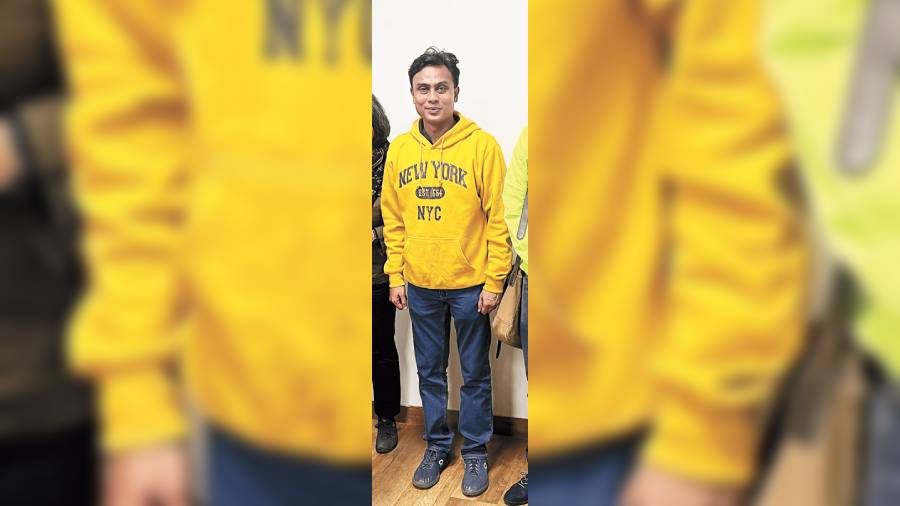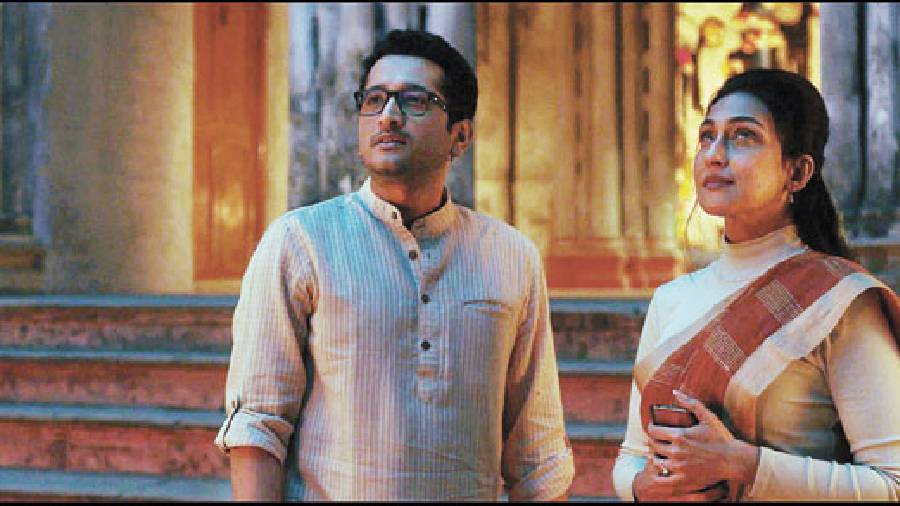The Rajdhani Express came to a standstill. I stepped into Delhi on the morning of December 5, and saw people swarming around in pullovers and jackets. I was comfortable in my full-sleeve shirt, maybe it had something to do with the ample warmth in the cockles of my heart. There I was, on my way to the hallowed campus of the best university in the country, on an invitation to screen my new film Mahishasur Marddini there. I almost felt like a prince!
The rest of the day was spent familiarising ourselves with the huge campus on foot. It was breathtaking. The sheer green cover was astounding. Kudos to the team which built and nurtured this space!
It was D-Day, December 6. At lunchtime, I came to know from the student coordinator that the turnout was going to be good — along with the students, faculty members who hadn’t watched the film earlier were going to be there. That ended my appetite. By 4 pm, I had done the tech check, and was ready. Our DA (director’s assistant) Aryuun Ghosh, all dressed up for the occasion, seemed very confident. We called up our cinematographer Subhadeep Dey and told him how much we missed him. He was supposed to be there with us, but had to cancel the trip eventually. Our EP (executive producer) Anindya Sengupta called us up to convey his good wishes.

Ranjan Ghosh
Rituparna Sengupta sent us a short video addressing the students about how badly she wanted to be there, but could not, because of her shoot. The students started arriving by 5pm. The HoD of the cinema studies department introduced me. I went on to hear that since 2016-17, no special screening was held at the School of Arts and Aesthetics. Regular classroom screenings were held, of course, till Covid struck.
Mahishasur Marddini, therefore, was the first proper special screening held by the SAA after a long, long time, wherein the film-maker was invited and hosted on campus. I was pretty relaxed up until then. That particular information made me tense.
Professors who had watched the film earlier reassured me that it was an important experiment that needed to be shared with the students of all the three departments — cinema studies, theatre and performance studies, and visual art. The faith they reposed in the film surprised me given the rather lukewarm response in my own city Kolkata.
I introduced the film in short. The lights went out. Mahishasur Marddini had begun. Aryuun and I stepped out. I do not watch my films at public screenings anyway. But here, the fact that the venue was JNU and the audience comprised the best brains of the country, was weighing heavy on my mind.
We took short strolls around the SAA building, and gulped some 50,000 cups of coffee at the India Coffee House. I received two ‘best of luck’ texts from Saswatada (Chatterjee) and Parambrata (Chattopadhyay); I spoke with our editor Amit Pal and music director Avijit Kundu. Ritudi wanted an update. I informed her that the show was on.
The clock ticked by. We sat on the steps of the magnificent JNU Convention Centre. It was a full moon night. A cool breeze blew across my face. I remembered my narration to Ritudi, the ease with which I had managed to convince Saswatada and Parambrata to do the film, my little fights with Debasree, another EP of our film, the lengthy costume discussions with our stylist Payel, the intense meetings with Ashisda, our art director, our struggle of six months to get the VFX in place along with Rajat’s young team... everything came back to me in a beautiful collage of memories.
Aryuun strolled up and down. He was nervous. These past two years he had been by my side like a giant rock, and worked hard to see the film to its logical end.
It was 7.45pm. The film ended. The sound of applause and loud cheering from the mini-auditorium startled me. As I entered tentatively, the lights came on, and the cheering and clapping intensified. For a moment I was zapped. Where was I? In some theatre in Kolkata? And immediately I came out of my trance. It was Delhi, where I was getting the applause, I realised. I smiled to myself.
The audience thought I smiled at them.
With some trepidation, I faced the students — doing their Masters, MPhil or PhD, across the three disciplines. Their eyes were fixed on me, their faces were beaming. I knew then and there that Mahishasur Marddini had managed to connect with her audience. The faculty shook my hands. I still remember the first words of one of them, “We haven’t seen anything like this in Indian Cinema before, how did you manage to do it?!” The auditorium was quiet for a few minutes. I guess they were allowing the film to sink in. It took some gentle nudge from the faculty, for the students to open up. A deluge of questions, observations, insights, and even some constructive criticism followed.
The very first remark was that they found the film very new and very bold — in terms of content, form and style. The use of one location and the use of a single night as the time-frame struck a chord with the students. The absence of a plot-driven story, the multiple-act structure akin to a play went down well with them. They heaped praises on Rituparna, adding that they hadn’t watched anything like this in her oeuvre; they felt Saswata, Parambrata and Koushik Kar were perfectly cast. They congratulated Aryuun and spoke highly of the other youngsters as well — Sritama, Arunima, Abhyuday, Purbasha. The faculty dissected the set pieces of Pawan Kanodia, Shaheb Bhattacherjee and Poulomi Das. Something that touched me was the fact that they understood why I did not want to focus on a single topic, and instead revisited various issues together.
It was to hammer home the point I was trying to make about the nightmarish state of things that continue even to this day, as far as women are concerned. They loved the theatrical dialogues, identified with the discourses, and termed the film ‘intensely powerpacked’. It was ironic, since I faced quite a few brickbats for this very aspect back home.
What won them over, however, was the marriage between the forms of theatre and cinema. They felt that the lighting and composition, the sound design and mix (by Abhik Chatterjee and Ayan Bhattacharya), the BGM, the colour (by Manikumar PV), the set design — everything worked harmoniously to create a hallucinatory world, with an ending that gave them goosebumps.
There was constructive criticism, too. They observed that the film took some time to take off, and wondered if I could have paced things up in the first 15 to 20 minutes. I accepted their critique in all humility.
Sadly, almost none of them were from Bengal. They were a mixed bag from Kerala, Tamil Nadu, Karnataka, Maharashtra, UP, Bihar, Assam, Uttarakhand, Jharkhand, even Bangladesh. I was stunned that despite a dialogue-heavy script in another language, they connected with the film. What else could I ask for?
What happened next? I was asked to carry a DVD of the film. It became a part of the SAA library as a reference film. That night the students took us out to the famed Ganga Dhaba. We hung around till 3am. Over coffee, we discussed cinema, theatre, literature, music, politics and what not! The HoD threw a party in the honour of the film the following day. I was deeply moved by the gesture. A lot of students and the faculty came in to celebrate Mahishasur Marddini. That party, too, went on till late in the night.
My takeaway from the JNU screening — think differently, the aim should be to contribute to cinema. In the end, there will always be a few thoughtful minds who will appreciate your effort.











